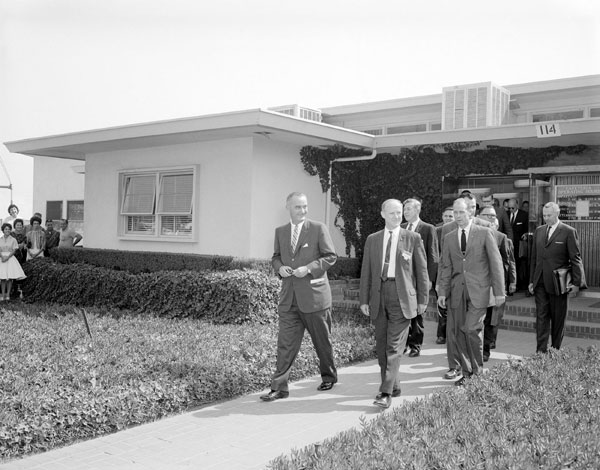Slice of History: Vice President Lyndon Johnson Visits JPL
Monday, February 27th, 2012
Each month in “Slice of History” we feature a historical photo from the JPL Archives. See more historical photos and explore the JPL Archives at https://beacon.jpl.nasa.gov/.

Vice President Lyndon Johnson Visits JPL — Photograph Number P-1723A
On October 4, 1961, Vice President Lyndon B. Johnson visited NASA’s Jet Propulsion Laboratory in Pasadena, Calif. In his role as chairman of the National Aeronautics and Space Council, he toured the Lab and heard presentations about JPL’s lunar programs (Ranger and Surveyor), planetary program, the Deep Space Network and future plans. President John F. Kennedy had made his presentation to Congress several months earlier about putting a man on the moon before the decade ended. During the 1960s, JPL’s role shifted somewhat from lunar and planetary exploration to support of and preparation for manned missions to the moon and planets.
This photo shows Johnson walking out of the cafeteria (then located in Building 114) with JPL Director William Pickering while employees gathered around.
This post was written for “Historical Photo of the Month,” a blog by Julie Cooper of JPL’s Library and Archives Group.





















